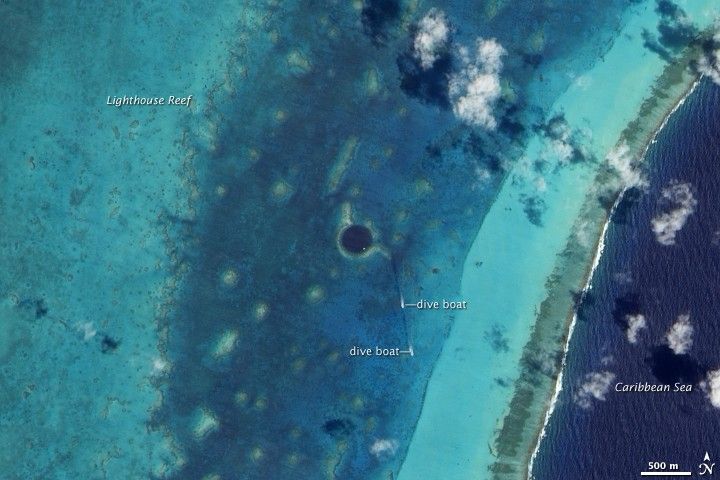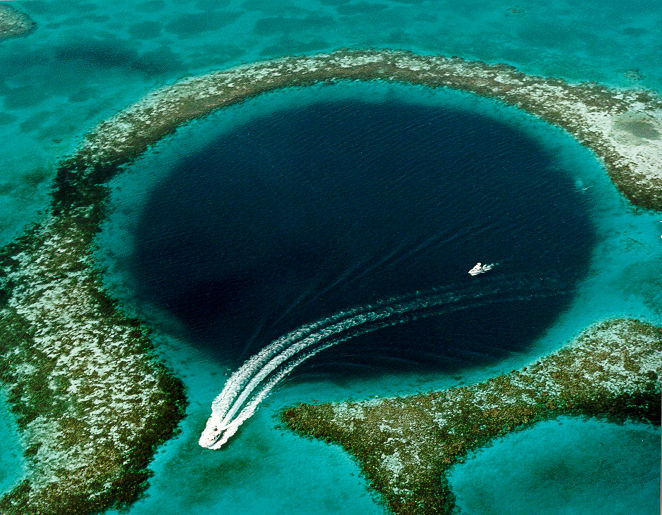At first glance, it might just look like a dark circle in the middle of the ocean, but the Great Blue Hole is much more than that. It’s one of the most mysterious and striking underwater formations on Earth. These deep, circular sinkholes are called blue holes, which or largely formed in banks surrounded by limestone or coral reef environments. While they appear serence and still on the surface, they hold stories about Earth’s past within their depths.
Blue holes form over thousands of years, typically beginning as caves during periods of lower sea levels. As the ocean rises, especially after the ice ages, these caves flood and their ceilings sometimes collapse, forming a vertical shaft. What remains is a submerged sinkhole, often filled with layers both freshwater and saltwater that do not mix, creating unique ecosystems and chemical conditions. (WHOI)
One of the most famous examples in the world is the Great Blue Hole of Belize (UNESCO). Located near the center of Lighthouse Reef, about 70 km off the coast of mainland Belize and near Ambergris Caye, it measures over 300 meters across and raches depths of around 125 meters. When looking from above, it appears as a perfect dark blue circle surrounded by reef.

Sattelite image of Great Blue Hole in Belize (credit)
Scientists believe the Great Blue Hole was once a massive dry cave systems during the last Ice Age, over 10,000 years ago. As glaciers melted and sea levels rose, the cave was submerged and the roof eentually collapsed, forming the giant hole we see today. This theory is supported by stalactites and stalagmites found deep inside, which could only have formed in dry conditions.
Besides their geological importance, blue holes around the world continue to intrigue scientists, marine biologists, and divers alike. These formations are found in places like the Bahamas, the Red Sea, and even parts of China (Atlas Obscura). They often host unique ecosystems, with some containing ancient bacteria, rare marine species, and unusual chemical layers deep below the surface. Because their lower layers are often cut off from oxygen and light, they presere conditions that are almost untouched by time. Exploring blue hoels not only helps researchers understand Earth’s history, but also highlights how these rare formations are natural wonders and vital parts of out planets underwater environment.

Arial shot of boats in the Great Blue Hole of Belize (credit)
Featured Images:
The first image shows a sattelite view of the Great Blue Hole in Belize, capturing its near perfect circular shape and contrast with the surrounding reef waters. Attribution: Photo by NASA Earth Observatory (source)
The second featured image is a arial shot of the Great Blue Hole in Belize, as boats explore the waters. Attribution: Great Blue Hole Wikipedia (source)